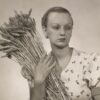
Rewrite
Lead ImageCorinne Day, from The Virgin Suicides (MACK, 2025), published on the occasion of the film’s twenty-fifth anniversary© Corinne Day Estate
Sofia Coppola didn’t know she wanted to be a film director until she read Jeffrey Eugenides’ 1993 novel, The Virgin Suicides. “I heard that a guy was making a movie of it and making it really dark and sexual,” she told Cindy Sherman in a conversation for AnOther in 2023. “I felt, oh no, I hope he doesn’t ruin this book I love.” Staying faithful to Eugenides’ tight prose and enlisting Air to create one of the most iconic original scores of the 1990s, the film Coppola made instead was nothing short of a masterpiece. An intoxicating, pastel-hued tale of mysterious death in stagnant 70s suburbia, few films have captured the subtle complexities of being a teenage girl as deftly since.
Before filming, Coppola read that Mary Ellen Mark had taken behind-the-scenes images of Apocalypse Now. She liked the idea, and invited Corinne Day to set, having come across the late British fashion photographer’s raw, unadorned shots of Kate Moss and Rosemary Ferguson in The Face. “I hadn’t seen that before in fashion photography,” she says. “You felt like you were there with them and knew these girls, or wanted to.” Shot over a hot summer in Canada, the images Day took on set have endlessly circulated internet moodboards ever since – Kirsten Dunst daydreaming on a faded floral sun lounger, sinks scattered with beauty products, and the Lisbon girls, a flurry of blonde hair doused in sunshine. They are as much a part of the cult fabric of The Virgin Suicides as the film itself.
These images are gathered in a new book published by Mack, marking the 25th anniversary of Coppola’s influential debut and Day’s document of its making. The revolutionary photographer died of a brain tumour in 2010 – something Jeffrey Eugenides, little-acquainted with the fashion world, didn’t know until Coppola invited him to pen a few lines for the book. He poignantly writes: “Everything pictured here came from […] an original source – Grosse Pointe in the 1970s – that, like the heroines of the story, no longer exists. I didn’t know that Corinne Day had died until Sofia sent me these photos. That adds to these portraits a final note of elegy.”
25 years on from its release, the aesthetic power of The Virgin Suicides still resonates. The touchstone of a career devoted to centring women on screen, its influence is felt not only in Coppola’s cinematic opus, but in the work of countless artists who have connected to its haunting vision of girlhood. Upon the book’s publishing, AnOther invites four women image-makers who have been inspired by the film – or have inspired it themselves – to weigh in on the lasting legacy of The Virgin Suicides, and share one image of their own that resonates with the film’s visual world.
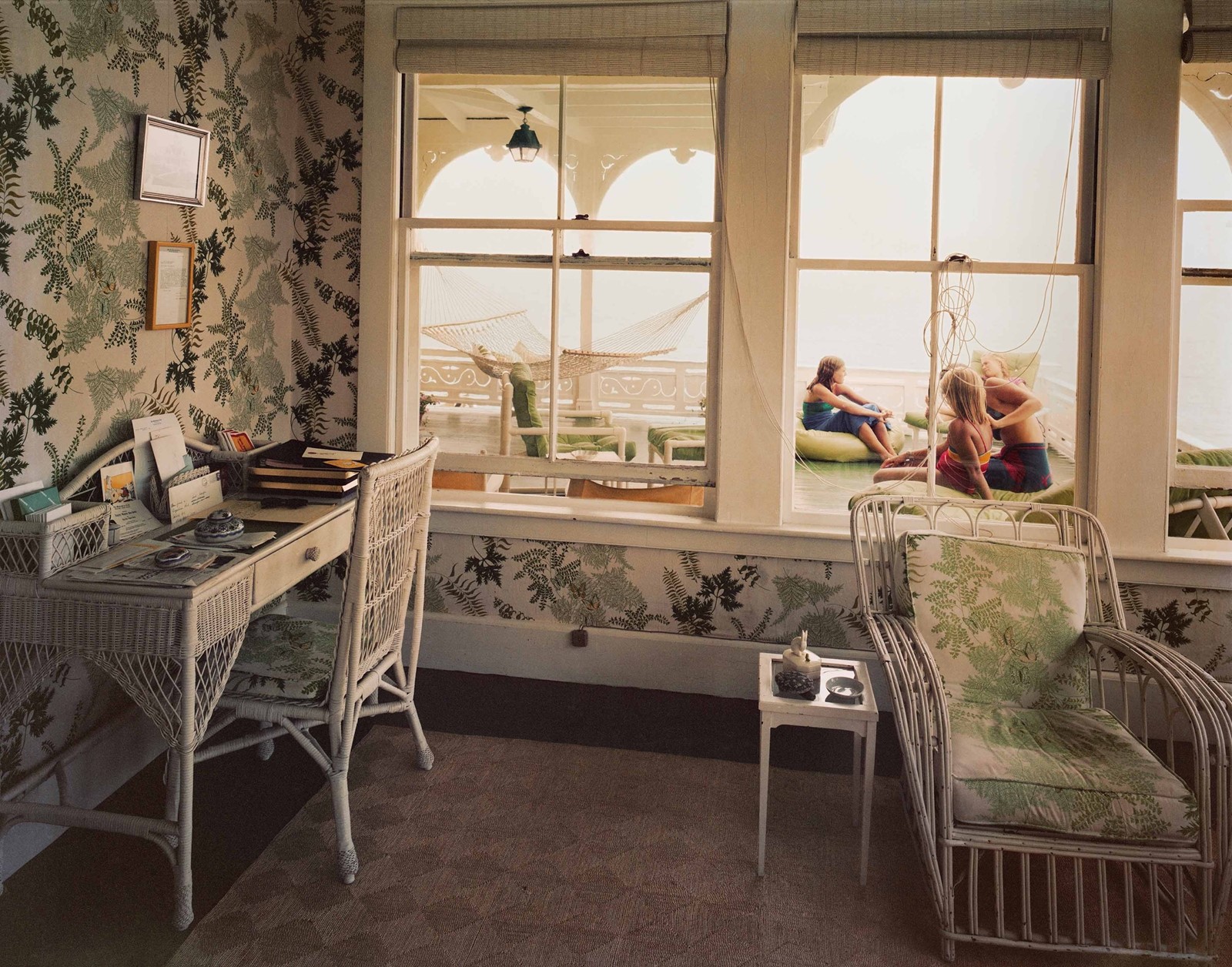
“In her book Archive (2023), Sofia Coppola mentioned my book, Theater of Manners (1997), as a key reference for The Virgin Suicides. But when the film came out in 1999, I didn’t think she and I had things in common. It was so radical to me at the time; to talk about girls sleeping with guys when they were much too young … when I think of myself at that age, I was so conservative. And then there’s suicide on top of it, and the weird parents. There was this really strange, fine line between horror and very innocent beauty. I just thought, how did she find those girls? And how did she get what she got out of them?
“In Archive, Sofia placed a film still from The Virgin Suicides of the Lisbon girls in their bedroom next to my photograph, Ada’s Interior (1982). I wonder if the formal concerns of my picture – where I placed people – influenced her, or if it was just the general mood and attitude of the girls in the room. What we’re talking about, which really interests me, is the difference between influence and imitation. What Sofia really teaches me is the formal parts of putting a still together; not just a film, but the spaces, the scale, the light and her photographic sense. And that has to do with taste, too. I like the colour, I like the clothes she puts on her subjects, I like the curtains … all the interior decoration and production design of her films are so much what I would like for myself.
“Last year, I walked Sofia and her husband around my show Family Ties at the Jeu de Paume. She truly loves photography. I’d like to ask her: does she think there’s a huge difference between a still photograph and a moving image? I think she has incredible humility, because she asked me why I did this and that in my photos. It’s kind of wonderful that she’s always learning, and wanting more information.”
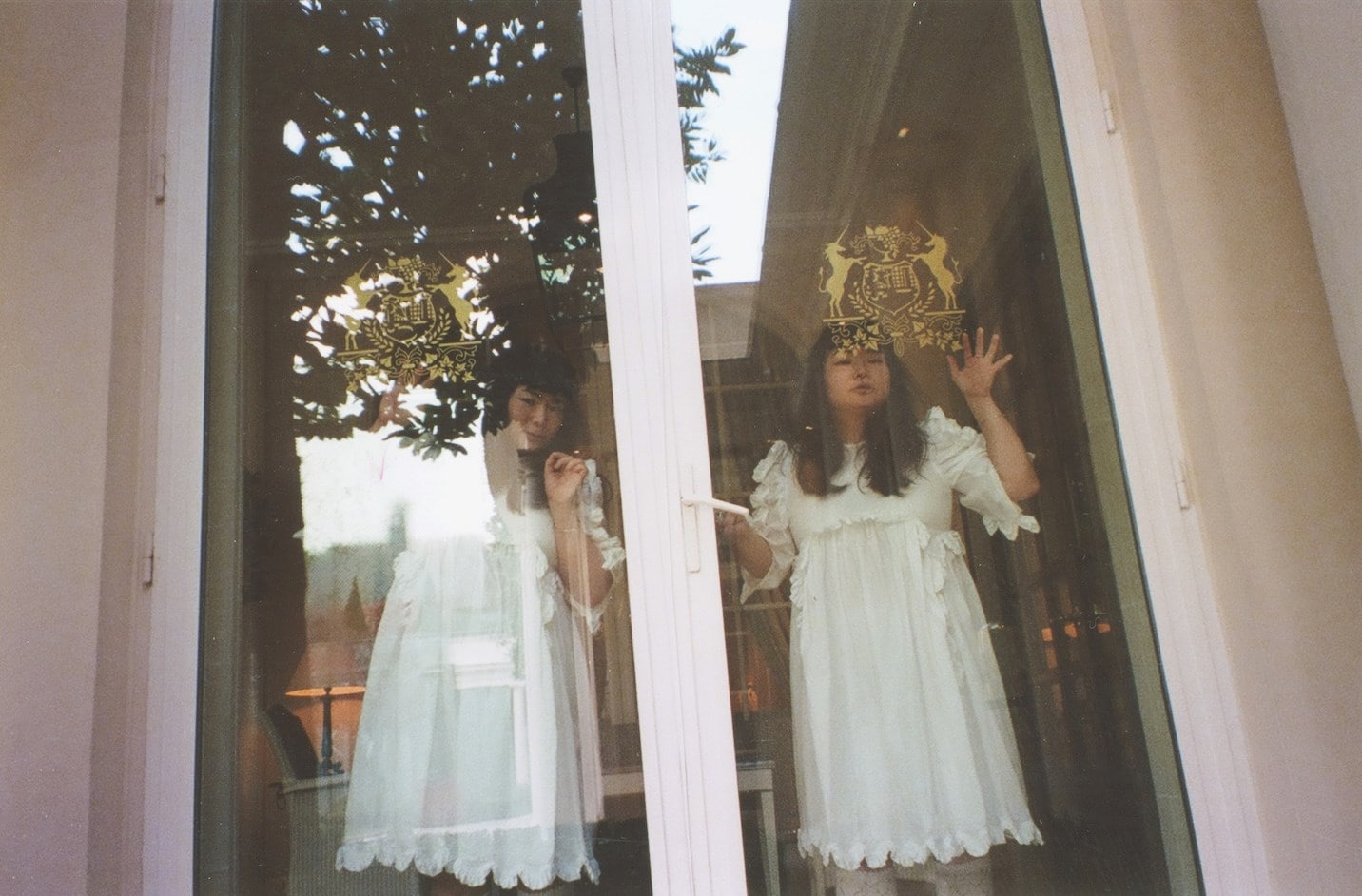
“I went to the London premiere of The Virgin Suicides, which had a Q&A afterwards. The one thing I remember was this guy asking [Sofia], ‘How do you become a filmmaker?‘ And she said, ‘Have a great filmmaker as a dad.’ That was so funny. I hadn’t watched the film for 20 years, but I rewatched it a little while ago to reconfirm it. It was around the era of Harmony Korine, Vincent Gallo, Buffalo ‘66. I found it quite fashionable with nice colours, the pink and blue, and this blonde girl, and the long-haired boy. She captures the feeling of being a teenager – you’re not sure about the future and you only know the life in front of you, school and home. It’s very melancholic, and at that time, it felt like a really new thing.
“The image I have shared is more Marie Antoinette-ish. It was shot during Covid in 2020, and I was quarantining at the Hotel Bristol, wearing these girly dresses. It was totally in boredom, because I had to stay in the room for seven days, and I felt like a princess stuck in a castle. When I was there, I was sure there was a ghost in the room – one night, I could feel something, and then suddenly the light went off. I told production, and she said, ‘Oh, two other female photographers said they felt a spirit at the Bristol.’ I know Sofia Coppola has shot at the Chateau Marmont, but I’d be scared to go as I heard there’s a ghost there too.”
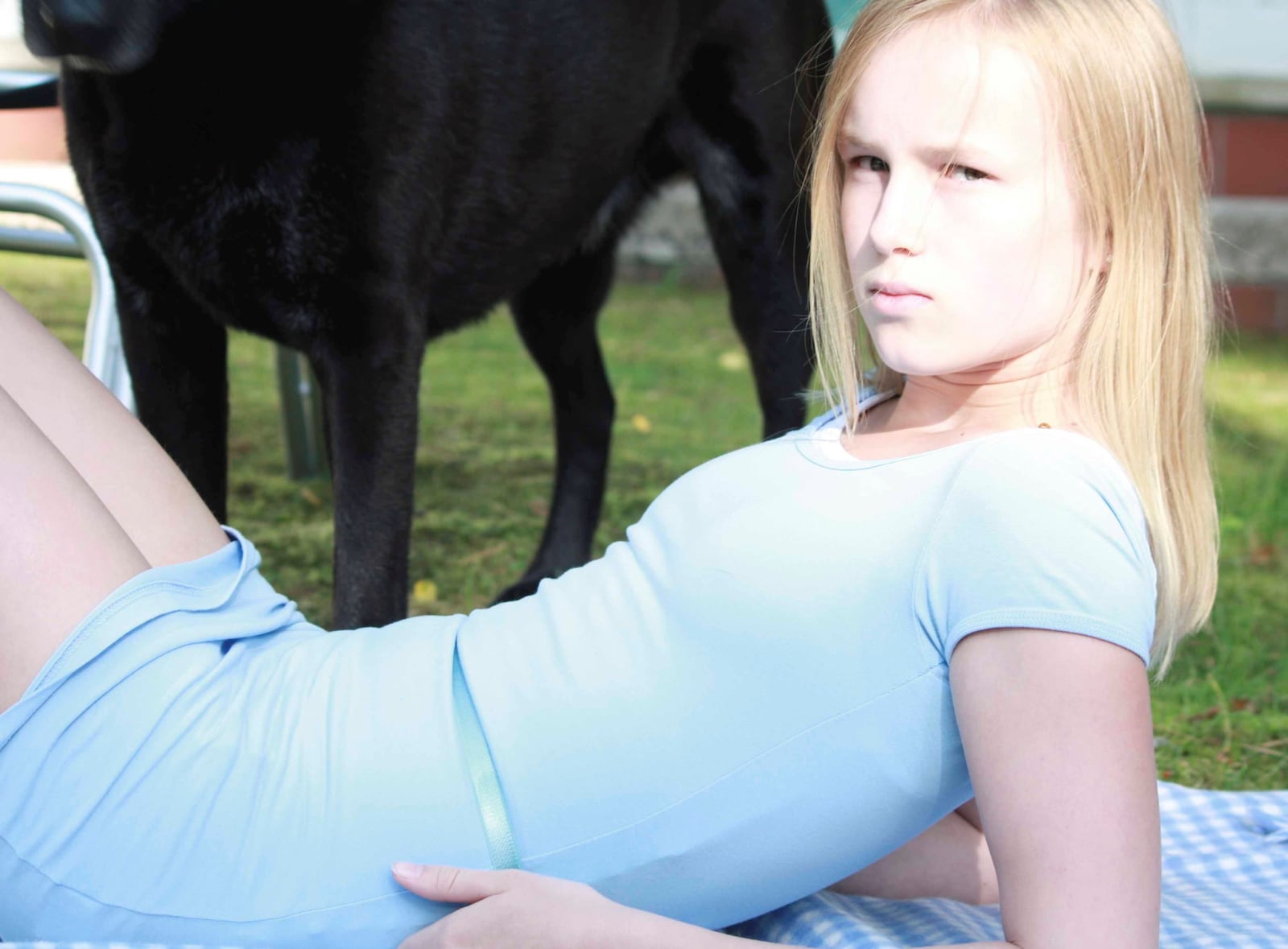
“I was in high school when I first saw The Virgin Suicides. I remember being totally fascinated by the Lisbon sisters and their world. It was a film that inspired my early photography, for sure. Growing up in the forest, playing dress-up with my sister and my friends, it was a world that connected to mine in some ways.
“I remember just loving the overall white and light aesthetic of the girls’ outfits, this angelic style. It reminds me a lot of Dutch Waldorf school celebrations, where we wore white with flowers on our heads. It sounds very cult-like, but it was actually beautiful and creative. I loved the scenes of the sisters hanging out, looking out of windows. Time seemed to stand still, and I think the film captured the boredom of being a teenager that you take for granted later on in life.
“Many of the themes in The Virgin Suicides are very present in my work. I started photographing my sister and my friends from about age ten, and never really stopped. I am currently working on a new big personal project that revolves around girlhood, exploring an archive of teenagers that I shot in the past and am now casting new girls of that age to portray. That age is just very interesting, awkward and beautiful at the same time. It is inspiring for many photographers – mostly female, I think.”
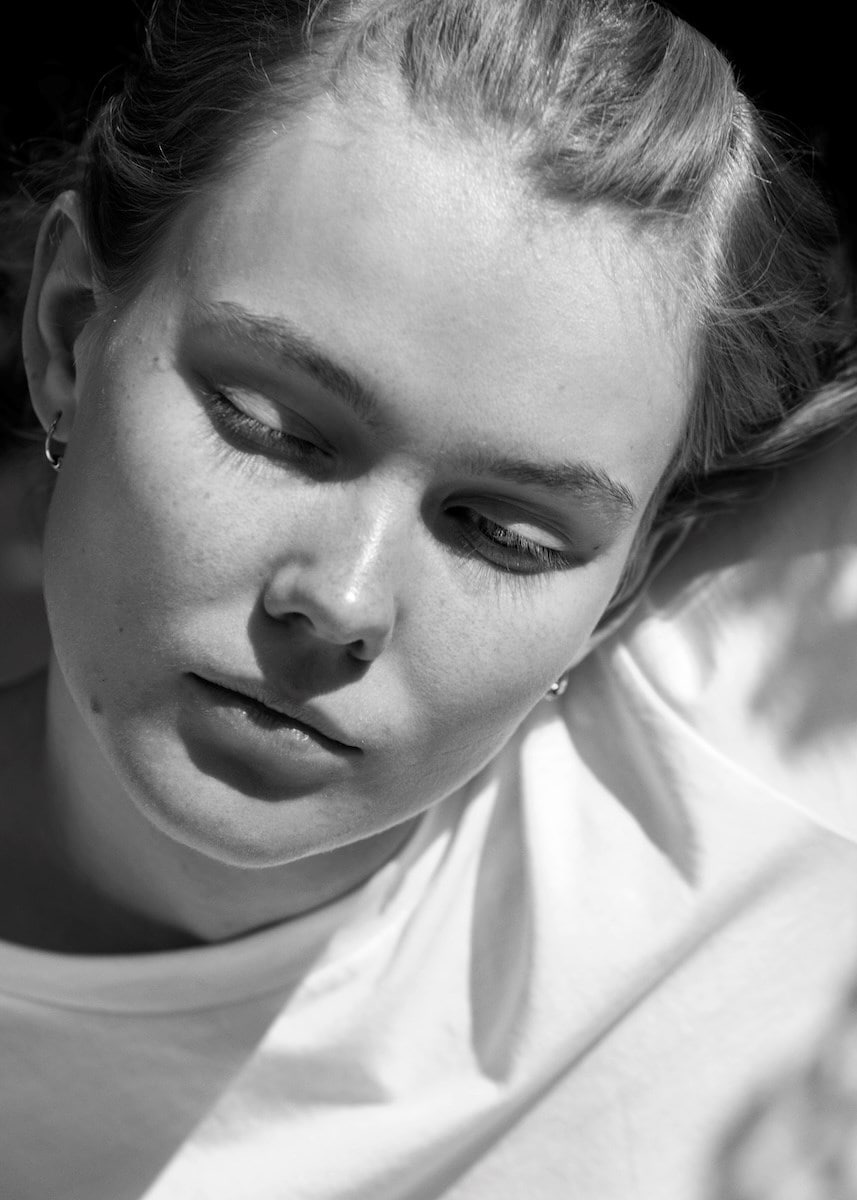
“I can’t remember exactly the first time I watched The Virgin Suicides, but I do remember really [being struck by] this kind of dark side hidden behind very beautiful pastoral images and stories of these young women. There was a kind of uncomfortable feeling. Sofia Coppola captures women with a lot of delicacy, and the soft light was quite important in the movie.
“She’s someone I have always respected a lot, even though she hasn’t influenced me directly. I recently discovered Lick the Star. It’s her first movie, a short film, and I found it really visually amazing – it’s more raw and it’s in black-and-white. I got very excited by it.
“Generally, something that she’s mastered is her portrayal of women. I feel like there’s something subtle and delicate [to the way she does it]. As a photographer, my work centres around the female figure and all the aspects that go with it: identity, beauty, the feelings, the complexity of being a woman. I feel like those ideas are really present in her work.”
The Virgin Suicides by Corinne Day is published by Mack, and is out now.
in HTML format, including tags, to make it appealing and easy to read for Japanese-speaking readers aged 20 to 40 interested in fashion. Organize the content with appropriate headings and subheadings (h1, h2, h3, h4, h5, h6), translating all text, including headings, into Japanese. Retain any existing
tags from
Lead ImageCorinne Day, from The Virgin Suicides (MACK, 2025), published on the occasion of the film’s twenty-fifth anniversary© Corinne Day Estate
Sofia Coppola didn’t know she wanted to be a film director until she read Jeffrey Eugenides’ 1993 novel, The Virgin Suicides. “I heard that a guy was making a movie of it and making it really dark and sexual,” she told Cindy Sherman in a conversation for AnOther in 2023. “I felt, oh no, I hope he doesn’t ruin this book I love.” Staying faithful to Eugenides’ tight prose and enlisting Air to create one of the most iconic original scores of the 1990s, the film Coppola made instead was nothing short of a masterpiece. An intoxicating, pastel-hued tale of mysterious death in stagnant 70s suburbia, few films have captured the subtle complexities of being a teenage girl as deftly since.
Before filming, Coppola read that Mary Ellen Mark had taken behind-the-scenes images of Apocalypse Now. She liked the idea, and invited Corinne Day to set, having come across the late British fashion photographer’s raw, unadorned shots of Kate Moss and Rosemary Ferguson in The Face. “I hadn’t seen that before in fashion photography,” she says. “You felt like you were there with them and knew these girls, or wanted to.” Shot over a hot summer in Canada, the images Day took on set have endlessly circulated internet moodboards ever since – Kirsten Dunst daydreaming on a faded floral sun lounger, sinks scattered with beauty products, and the Lisbon girls, a flurry of blonde hair doused in sunshine. They are as much a part of the cult fabric of The Virgin Suicides as the film itself.
These images are gathered in a new book published by Mack, marking the 25th anniversary of Coppola’s influential debut and Day’s document of its making. The revolutionary photographer died of a brain tumour in 2010 – something Jeffrey Eugenides, little-acquainted with the fashion world, didn’t know until Coppola invited him to pen a few lines for the book. He poignantly writes: “Everything pictured here came from […] an original source – Grosse Pointe in the 1970s – that, like the heroines of the story, no longer exists. I didn’t know that Corinne Day had died until Sofia sent me these photos. That adds to these portraits a final note of elegy.”
25 years on from its release, the aesthetic power of The Virgin Suicides still resonates. The touchstone of a career devoted to centring women on screen, its influence is felt not only in Coppola’s cinematic opus, but in the work of countless artists who have connected to its haunting vision of girlhood. Upon the book’s publishing, AnOther invites four women image-makers who have been inspired by the film – or have inspired it themselves – to weigh in on the lasting legacy of The Virgin Suicides, and share one image of their own that resonates with the film’s visual world.

“In her book Archive (2023), Sofia Coppola mentioned my book, Theater of Manners (1997), as a key reference for The Virgin Suicides. But when the film came out in 1999, I didn’t think she and I had things in common. It was so radical to me at the time; to talk about girls sleeping with guys when they were much too young … when I think of myself at that age, I was so conservative. And then there’s suicide on top of it, and the weird parents. There was this really strange, fine line between horror and very innocent beauty. I just thought, how did she find those girls? And how did she get what she got out of them?
“In Archive, Sofia placed a film still from The Virgin Suicides of the Lisbon girls in their bedroom next to my photograph, Ada’s Interior (1982). I wonder if the formal concerns of my picture – where I placed people – influenced her, or if it was just the general mood and attitude of the girls in the room. What we’re talking about, which really interests me, is the difference between influence and imitation. What Sofia really teaches me is the formal parts of putting a still together; not just a film, but the spaces, the scale, the light and her photographic sense. And that has to do with taste, too. I like the colour, I like the clothes she puts on her subjects, I like the curtains … all the interior decoration and production design of her films are so much what I would like for myself.
“Last year, I walked Sofia and her husband around my show Family Ties at the Jeu de Paume. She truly loves photography. I’d like to ask her: does she think there’s a huge difference between a still photograph and a moving image? I think she has incredible humility, because she asked me why I did this and that in my photos. It’s kind of wonderful that she’s always learning, and wanting more information.”

“I went to the London premiere of The Virgin Suicides, which had a Q&A afterwards. The one thing I remember was this guy asking [Sofia], ‘How do you become a filmmaker?‘ And she said, ‘Have a great filmmaker as a dad.’ That was so funny. I hadn’t watched the film for 20 years, but I rewatched it a little while ago to reconfirm it. It was around the era of Harmony Korine, Vincent Gallo, Buffalo ‘66. I found it quite fashionable with nice colours, the pink and blue, and this blonde girl, and the long-haired boy. She captures the feeling of being a teenager – you’re not sure about the future and you only know the life in front of you, school and home. It’s very melancholic, and at that time, it felt like a really new thing.
“The image I have shared is more Marie Antoinette-ish. It was shot during Covid in 2020, and I was quarantining at the Hotel Bristol, wearing these girly dresses. It was totally in boredom, because I had to stay in the room for seven days, and I felt like a princess stuck in a castle. When I was there, I was sure there was a ghost in the room – one night, I could feel something, and then suddenly the light went off. I told production, and she said, ‘Oh, two other female photographers said they felt a spirit at the Bristol.’ I know Sofia Coppola has shot at the Chateau Marmont, but I’d be scared to go as I heard there’s a ghost there too.”

“I was in high school when I first saw The Virgin Suicides. I remember being totally fascinated by the Lisbon sisters and their world. It was a film that inspired my early photography, for sure. Growing up in the forest, playing dress-up with my sister and my friends, it was a world that connected to mine in some ways.
“I remember just loving the overall white and light aesthetic of the girls’ outfits, this angelic style. It reminds me a lot of Dutch Waldorf school celebrations, where we wore white with flowers on our heads. It sounds very cult-like, but it was actually beautiful and creative. I loved the scenes of the sisters hanging out, looking out of windows. Time seemed to stand still, and I think the film captured the boredom of being a teenager that you take for granted later on in life.
“Many of the themes in The Virgin Suicides are very present in my work. I started photographing my sister and my friends from about age ten, and never really stopped. I am currently working on a new big personal project that revolves around girlhood, exploring an archive of teenagers that I shot in the past and am now casting new girls of that age to portray. That age is just very interesting, awkward and beautiful at the same time. It is inspiring for many photographers – mostly female, I think.”

“I can’t remember exactly the first time I watched The Virgin Suicides, but I do remember really [being struck by] this kind of dark side hidden behind very beautiful pastoral images and stories of these young women. There was a kind of uncomfortable feeling. Sofia Coppola captures women with a lot of delicacy, and the soft light was quite important in the movie.
“She’s someone I have always respected a lot, even though she hasn’t influenced me directly. I recently discovered Lick the Star. It’s her first movie, a short film, and I found it really visually amazing – it’s more raw and it’s in black-and-white. I got very excited by it.
“Generally, something that she’s mastered is her portrayal of women. I feel like there’s something subtle and delicate [to the way she does it]. As a photographer, my work centres around the female figure and all the aspects that go with it: identity, beauty, the feelings, the complexity of being a woman. I feel like those ideas are really present in her work.”
The Virgin Suicides by Corinne Day is published by Mack, and is out now.
and integrate them seamlessly into the new content without adding new tags. Ensure the new content is fashion-related, written entirely in Japanese, and approximately 1500 words. Conclude with a “結論” section and a well-formatted “よくある質問” section. Avoid including an introduction or a note explaining the process.

